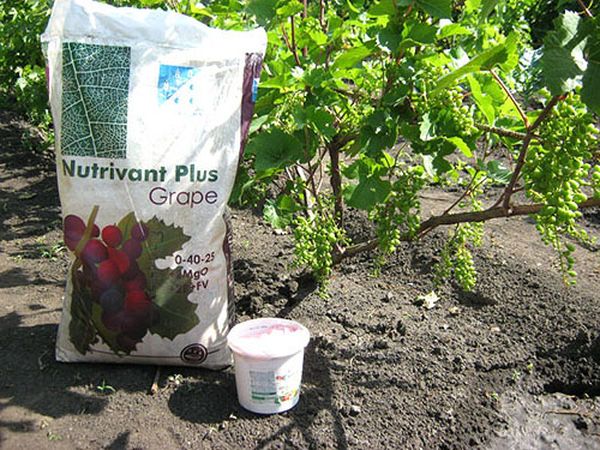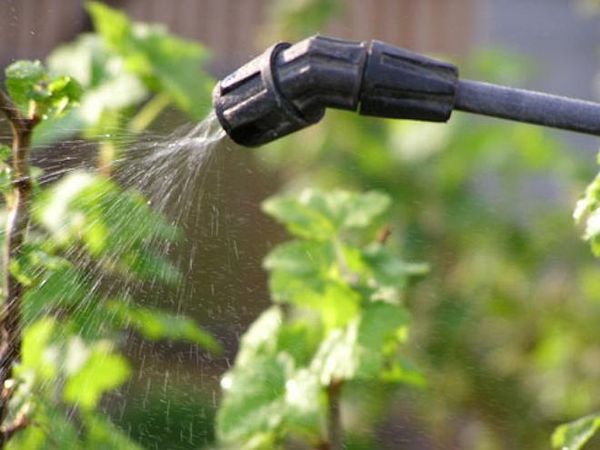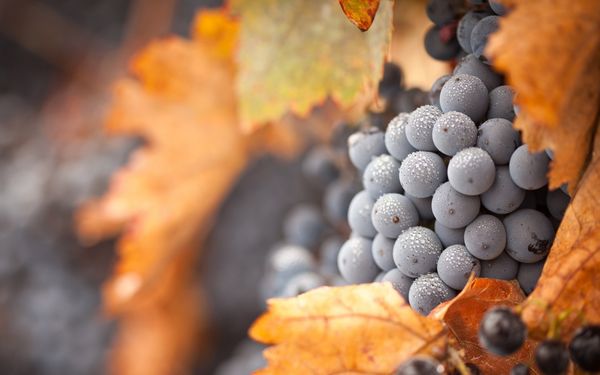Next year's harvest depends on how the plants are fertilized in the fall. Naturally, fertilizing and fertilizer plays an important role here. That is why the growers have to do a tremendous job to prepare the grapes not only for wintering, but also for the next season.
Table of contents
Does the vineyard need additional dressing in autumn
Over time, any soil tends to become depleted and lose its supply of nutrients. Vineyards also help reduce the amount of minerals and trace elements in the composition of the soil.If you do not produce the correct dressing, the plant can not only badly bloom, but also drop an immature crop.
In addition, the lack of trace elements will affect both the appearance of the bush, and the presentation and taste of the future crop.
The first should produce not earlier than 3 years after landing young plant. Immediately before planting, the soil had to be fertilized and not be very depleted.

It is necessary to distinguish dressing from the main fertilizer. The fact is that dressing is carried out annually, but the main ones are made once in 3-4 years.
What are the types of dressings
The modern market is replete with a number of different fertilizer compositions, including complex, designed specifically for growing grapes.
In this variety it is easy to get lost, especially for a beginner gardener. The first thing you need to learn that different dressings are used at different times of the year and in different conditions - in the winter alone, in the fall others.
Foliar
Foliar nutrition implies irrigation vineyards with a solution necessary for the nutrition of trace elements and substances. Naturally, this way you can make not everyone.
Best suited for this:
- mineral (manganese, ash, superphosphates, etc.);
- inorganic origin (iron, ammonium sulfate, etc.);
- the so-called microfertilizers (copper and zinc).

Aqueous solutions are prepared from these elements in accordance with the instructions attached to them and with a conventional sprayer applied to the bushes of grapes. Subsequently, the necessary substances are absorbed through the leaves and bark.
Mineral
Mineral fertilizers have firmly occupied their niche in the market and have not yielded to it for a long time. Among the variety can distinguish the main, the most necessary plants.
- Nitrogen. It is thanks to them that the bushes can build up a sufficient amount of green mass, form a sufficient number of shoots and leaves.
- Potash. Contribute to the rapid maturation of not only the brushes, but also the shoots themselves.When this type of fertilizer is applied in the fall, plants increase their resistance to winter frosts and they tolerate cold more easily.
- Copper as a necessary component is also introduced mainly in the autumn. Thanks to her, shrubs not only winter well, but also improve the growth of shoots.
- Fertilizers containing iron, calcium magnesium, sulfur. They are also used to make the grapes easier to bear the winter cold and in the future season gave a rich harvest.

Organic fertilizer
Particularly relevant is the subject of organic fertilizers. In favor of them, many gardeners, including winegrowers, refuse mineral. The latter are often referred to as "chemistry." In this case, a few were identified for autumn dressing, which can rightly be called indispensable.
- Manure. Thanks to him, breathability of the soil is improved. Helps the formation of beneficial microflora, while saturating the vineyards with the necessary trace elements.
- Compost. An excellent manure substitute, only cheaper and more affordable. It is created on the basis of various organic debris.
- Chicken litter. Excellent fertilizer, contributing to the saturation of phosphorus, potassium and magnesium. These microelements are especially necessary for vineyards.
- Wood ash. Serves as a complete fertilizer composition, which may well provide plants with potassium and phosphorus reserves.
Advantages and disadvantages of the autumn feeding of grapes
In autumn, the grapes stop growing and enter a dormant period. However, in order for the plant to well winter and react less to temperature extremes, it needs a supply of nutrients and trace elements.
The main advantage of the autumn feeding is not only that the plant manages to prepare well for wintering, but also that the introduced components well dissolved and absorbed into the soil.

Due to the abundance of water and melting snow, by the beginning of the new season the bushes can begin to fully feed. The vegetation period begins in a timely manner, and passes very successfully.
The disadvantage of the autumn feeding is the fact that at this time you can make not all the necessary fertilizers. In particular, the first part of nitrogen fertilizers must be applied in spring, and the second - in summer. In the autumn of their use is impractical.
The positive point is that when fertilizers are applied in the fall, as a rule, loosening soil. After all, the procedure requires that the substances are not brought into the upper layers of the soil. In this case, breathability is improved, and the risk of developing diseases and pathogenic microorganisms in the area is sharply reduced.
It is necessary to strictly observe the proportions indicated in the instructions, and also pay attention to the appearance of the bushes. It is by external signs that it is possible to determine whether it is necessary to feed at the moment or whether there is an abundance of any trace elements in the soil. It is on the proper selection of fertilizers and their introduction depends on the future harvest and its quality.
